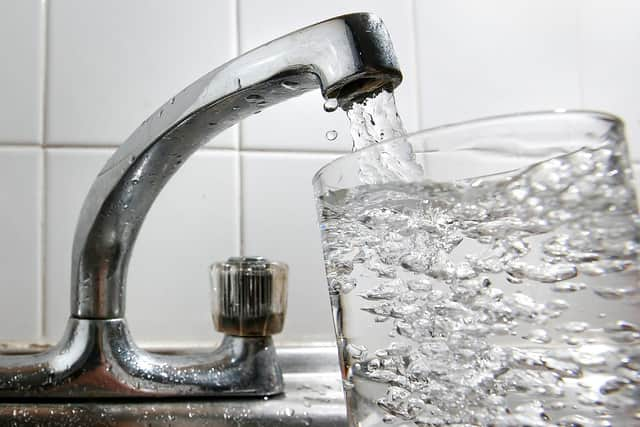Lancaster set to see ‘worst water shortage in UK’ by 2040
and live on Freeview channel 276
Britain may constantly face the stereotype of being gloomy and wet, but, with daily water consumption steadily rising and the average person using 142 litres daily, not much thought is given to what might happen if water weren’t so freely available.
New research from Sanctuary Bathrooms shows that Lancaster is the UK location most likely to be under threat from water stress by 2040, due to a combination of population, climate and water usage habits.
Advertisement
Hide AdAdvertisement
Hide AdThe city is forecast to see an ‘extremely high’ increase (80 per cent) in its water stress levels, meaning that residents of the city could see a serious public water supply drought.


And with individuals using so much water daily, this is likely to be a problem that is going to be widespread for numerous other Brits too, as part of a global issue.
After Lancaster, London, Brighton and Hove and Leicester are all set to see ‘high’ (40-80 per cent) increases in water stress levels.
Residents in the south and south east of England are more likely to experience a dramatic increase in their water stress levels, due to existing and growing population density, along with associated requirements for housing and property developments. This is as well as changing climate conditions and less rainfall than other areas of the UK.
Predicted water stress increase for UK cities by 2040
Lancaster: Extremely high (>80%)
Northampton: High (40-80%)
Peterborough: High (40-80%)
Bedford: High (40-80%)
Cambridge: High (40-80%)
Ely: High (40-80%)
London: High (40-80%)
Brighton & Hove: High (40-80%)
Birmingham: High (40-80%)
Leicester: High (40-80%)
Manchester: Medium-high (20-40%)
Edinburgh: Medium-high (20-40%)
Liverpool: Medium-high (20-40%)
Glasgow: Low-medium (10-20%)
Leeds: Low-medium (10-20%)
Sheffield: Low-medium (10-20%)
Cardiff: Low-medium (10-20%)
Newcastle Upon Tyne: Low (<10%)
Belfast: Low (<10%)
Advertisement
Hide AdAdvertisement
Hide AdWith all areas of the UK expecting to see an increase in their water stress levels, what can people do day to day to reduce their water usage? It can all start in the bathroom by:
Taking shorter showersUpgrading your shower head to newer designsChoosing a shower over a bath
For more information on the future water scarcity in the UK and Europe, along with more ways to reduce your water usage, visit here.
James Roberts, director at Sanctuary Bathrooms, said: “These shocking findings illustrate that the UK could be facing a huge problem with water availability across areas of the country in the coming decades, and our collective usage is going to have a direct impact on future generations to come.
Advertisement
Hide AdAdvertisement
Hide Ad“Our bathroom habits contribute to this, since maintaining good hygiene uses water in most activities, if not all, as part of our daily rituals. But this is something that extends to other areas of the home, and even our workplaces too. It is vital we raise awareness by highlighting key figures and stats - for example, not many people know that a bath uses 80 litres of water in one go!
"There are small changes that everyone can make to help reduce their personal impact and tackle this issue, whether that is switching water off in between activities, regular cleaning and maintenance of taps and showers, and even switching baths for short showers.”